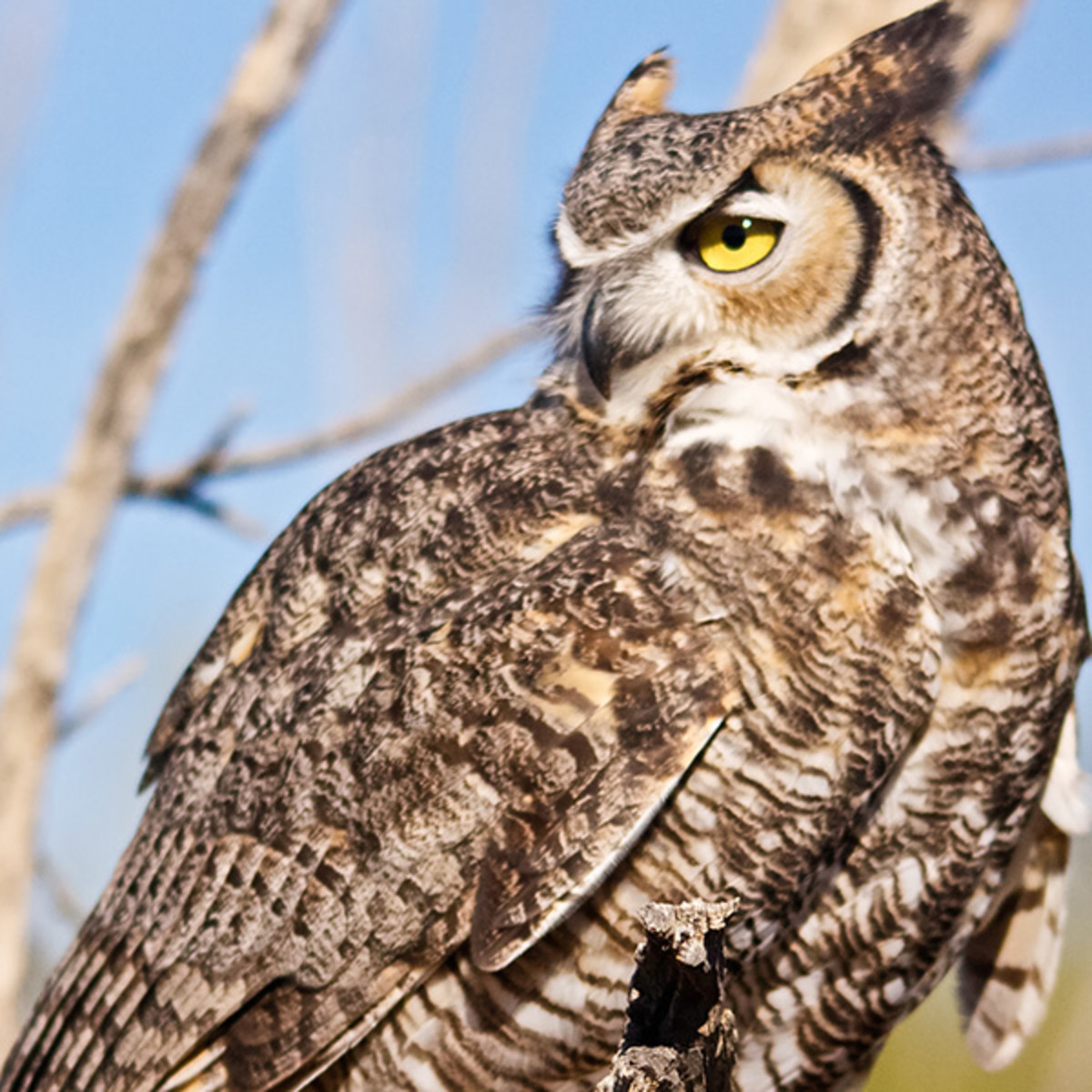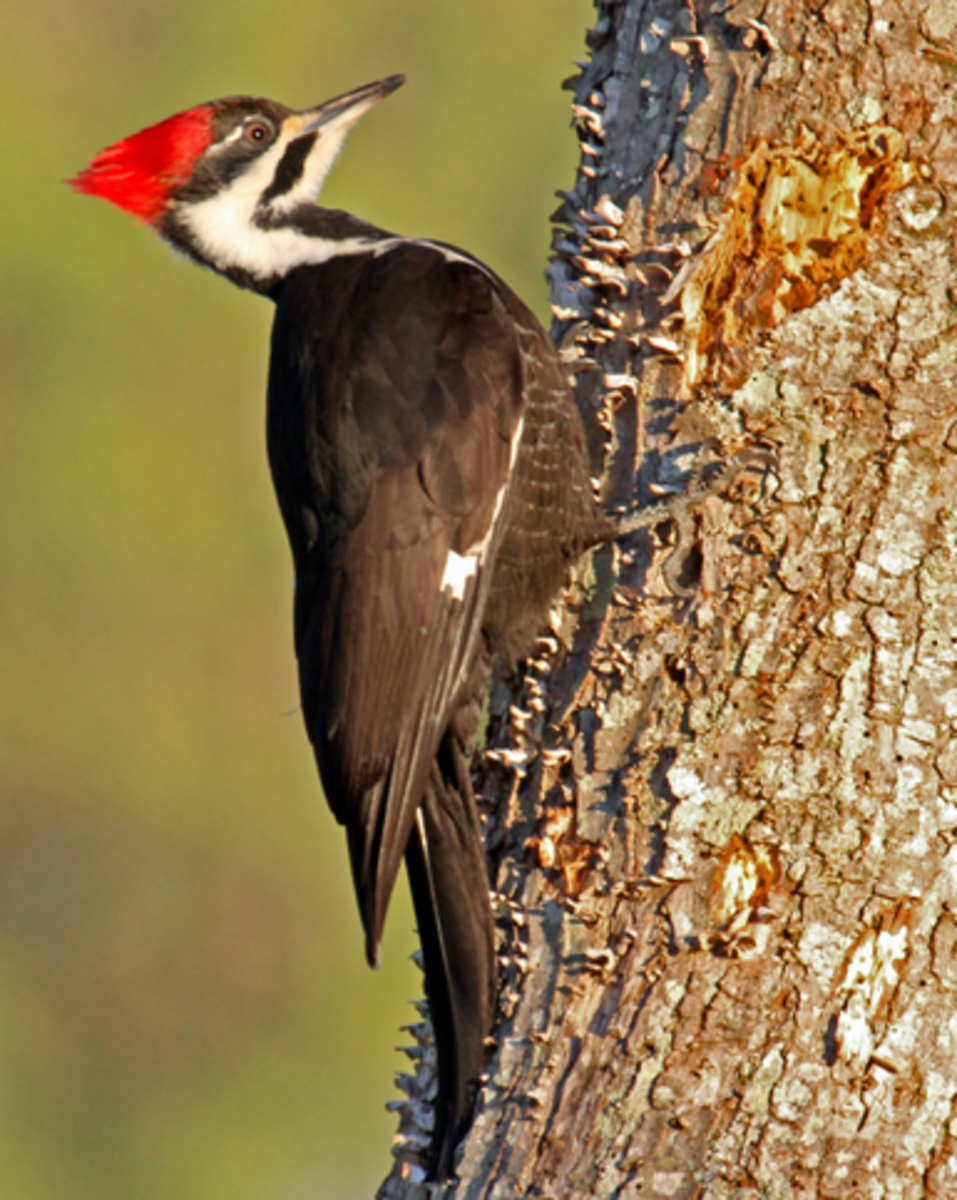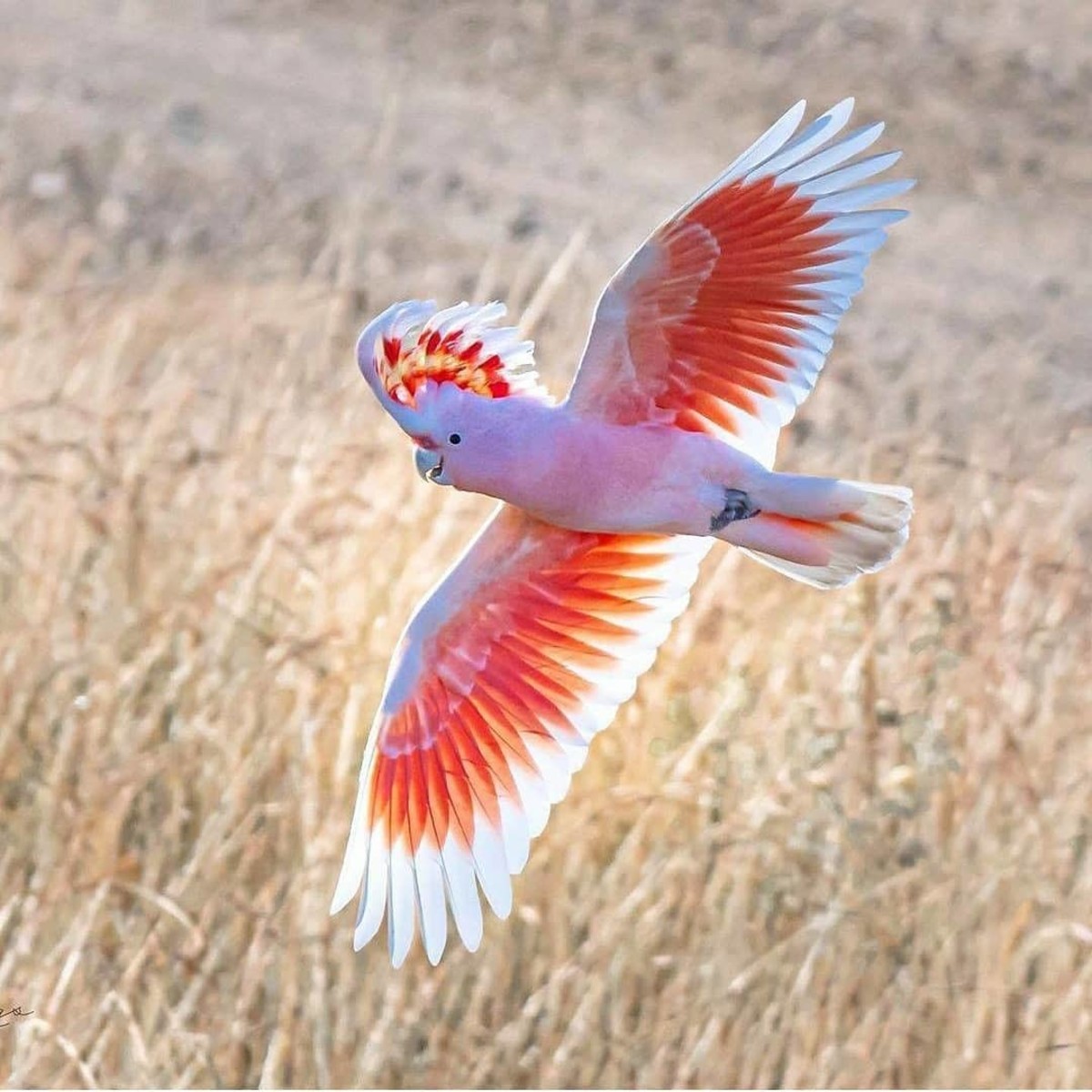Great Horned Owl
Scientific Name: Bubo virginianus
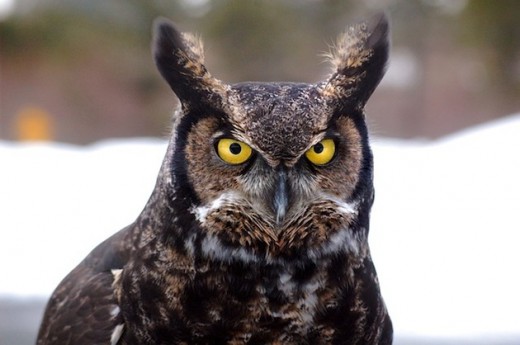
Description
Due to the fact that their ear tuffs look like horns, there is never any confusing the Great Horned Owl with any other species. This set up actually helps them to have better hearing. They have lovely coloring that includes both shades of light and dark brown. They also have a light gray coloring within them. Colors of white and cream are scattered around the face as well as on the belly region.
The males are smaller than the females with a size of about 20 inches. The females have a size of about 25 inches. The wingspan for the Great Horned Owl is very wide, about 50 to 60 inches total.
Interesting Links
- Owl Facts and Information
Owl Facts and Information. Feeding, habitat, distribution, reproduction, anatomy and more. Facts about the Great Horned Owl, the Barn Owl, the Snowy Owl among others and the conservation efforts made to preserve owls - Owlet - Facts and Information - The Portal of Life
Facts and Information about Owlet. Baby Owl Description, Behavior, Feeding and Reproduction.
Anatomy
The body of this owl is really spectacular. One of the facts about this creature is that it can fly up to 40 miles per hour. This is the fastest speed for any owl species. It is the delicate combination of different types of feathers that allow this to happen. Some of them are responsible for flight while others are responsible for keeping the owl warm. They make flying seem effortless too due to the layout of them.
Large eyes are a common element of all owls, but the Great Horned Owl has larger ones than any other. This is part of what gives it the unique look. It really isn’t known though why they have such large eyes. It certainly doesn’t help them to see any better than other species. The anatomy of these owls does provide them with exceptional use of their vision and their hearing though.
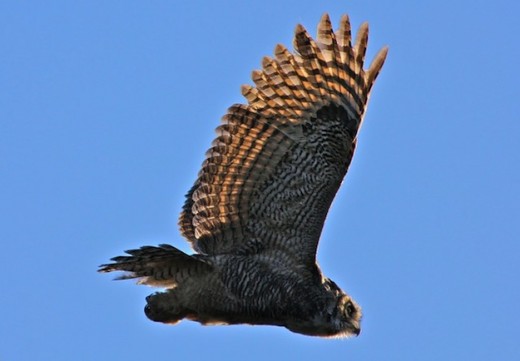
Interesting Links
- Penguin Facts, Emperor Penguins, Adelie Penguins, King Penguins
Penguin Facts and Information. Feeding, habitat, distribution, reproduction, anatomy and more. Facts about Species like the Emperor Penguin, King Penguin, Humboldt Penguin and many others. - Fox Facts and Information
Fox Facts and Information. Feeding, habitat, distribution, reproduction, anatomy and more. Facts about the Red Fox, Gray Fox, Arctic Fox, Fennec Fox, Kit Fox, Swift Fox among others and the conservation efforts made to preserve foxes.
Evolution
The fact that this species of owl is able to continually adapt to what is going on around it is fascinating to experts. Most of them have no doubt that his has helped them through the evolution process for millions of years. We don’t have any real fossils of this particular species to study though. What we have been relying on for answers are the fossils of other types of owls that have been located.
These types of birds have been around for millions of years. While some species weren’t able to survive and became extinct, the Great Horned Owl continues to go strong.
Through the evidence we have for them, many experts believe that this particular species used to be about three times larger than it is today. The need to for size diminished though as the predators and prey got smaller.
Great Horned Owl Video
Behavior
These owls are very isolated and they rarely come into contact with each other. The one exception is when they are ready to mate and while caring for their young. The who who sound comes from this species of owl. It is mistakenly associated across the board with other species as well. The calls that the males make are often to tell others that they have a claim in a given area. They also call out with a loud sound to get the attention of females. The higher pitched calls you hear are from the females in response.
As night approaches these calls back and forth can go on for a very long time. It is all part of the courting process that has to be completed before the pair will come together in person. If more than one male is calling, the female will have to decide who she wants to connect with.
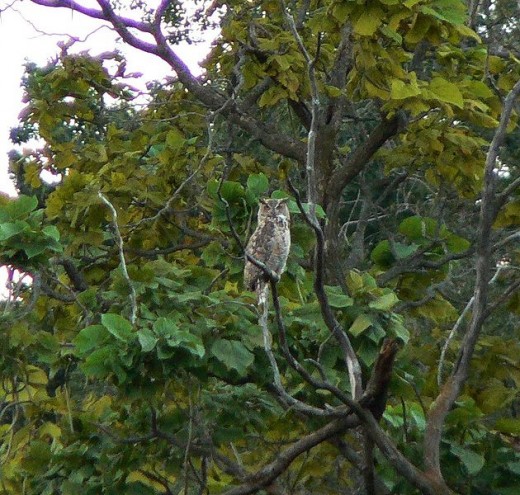
Interesting Links
- Hummingbird Facts and Information
Hummingbird Facts and Information. Feeding, habitat, distribution, reproduction, anatomy and more. Facts about the Anna's Hummingbird and the Rufous Hummingbird, Violet-headed Hummingbird and others - Orangutan Facts, Bornean Orangutan, Sumatran Orangutan
Orangutan Facts and Information. Feeding, habitat, distribution, reproduction, anatomy and more. Facts about Species like the Sumatran Orangutan, Bornean Orangutan and many others.
Habitat/Distribution
Part of the reason why the Great Horned Owl has been able to survive for millions of years is that they are able to do well in a variety of different locations out there. Are you aware that they are able to live in parts of Alaska? On the other extreme they also live in the tropic rainforest areas in South America. As long as they can find food and a place to be safe they will be content just about anywhere. That is why they also do so well in captivity.
The location in these areas where they will live is diverse too. For example many of them live in the trees and in the forest areas. Others are found on the open plains. They aren’t easily intimidated by humans or other types of animals. In some locations their habitat overlaps that of humans. They can be found by homes and even in parks where there are lots of trees.
Yet the places where they are able to freely live continue to get smaller due to the actions of humans. They don’t have as much selection as they once did when it comes to territory. As a result it becomes harder and harder for them to survive in spite of the fact that they do have amazing survival instincts.
Diet/Feeding Habits
These owls certainly do consume lots of food. They will search for it hours on end at night in order to satisfy the need that they have. They are skilled hunters so they lay in waiting for something to come into a given location. They usually don’t have to wait long though as there are plenty of creatures stirring all around. They may eat small prey or those that are too large to swallow. In such a scenario they will use the beak to break it down into portions that they can consume.
In the various regions where the Great Horned Owl lives there can be a variety of different types of foods to eat. For example they can hunt for fish and frogs when they are close to water. They can eat rabbits, rodents, possum, and squirrels when they are in the woods or close to open ground.
Reproduction
After pairs have been created through the process of calling out to each other, the pair will become an item. They will join together the following mating season as long as they both remain in the area. This type of annual reunion is one that is very fascinating to researchers. It can be difficult for them when their mate doesn’t return and take time before they will accept a new one to pair up with.
Females generally lay clutches of eggs with 4 in them. However, she may only offer 2 or she can offer up to 6. Her mate will be there to support her as they keep the eggs warm and save. The incubation period can last up to 35 days but it can end around day 26. They will take turns with the eggs and meeting their own needs out there by hunting.
They are instinctively very good parents. They will do all they can to keep the young protected. They will also do all they can to provide enough food for the young they have. During the first five weeks of life the young Great Horned Owls will grow very quickly. They will then leave to find their own way out there.
Great Horned Owl Video
- Facts about Pollution | Effects of Pollution
Pollution Facts and Information. Effects of Pollution in the Environment
Predators
More than 50% of the young though don’t survive the first year. They are often victims of hawks. This is the biggest predator out there in the wild. It is common for the hawks to live in the same general areas as the Great Horned Owl too. Humans definitely create issues for them as well through hunting and trapping.

